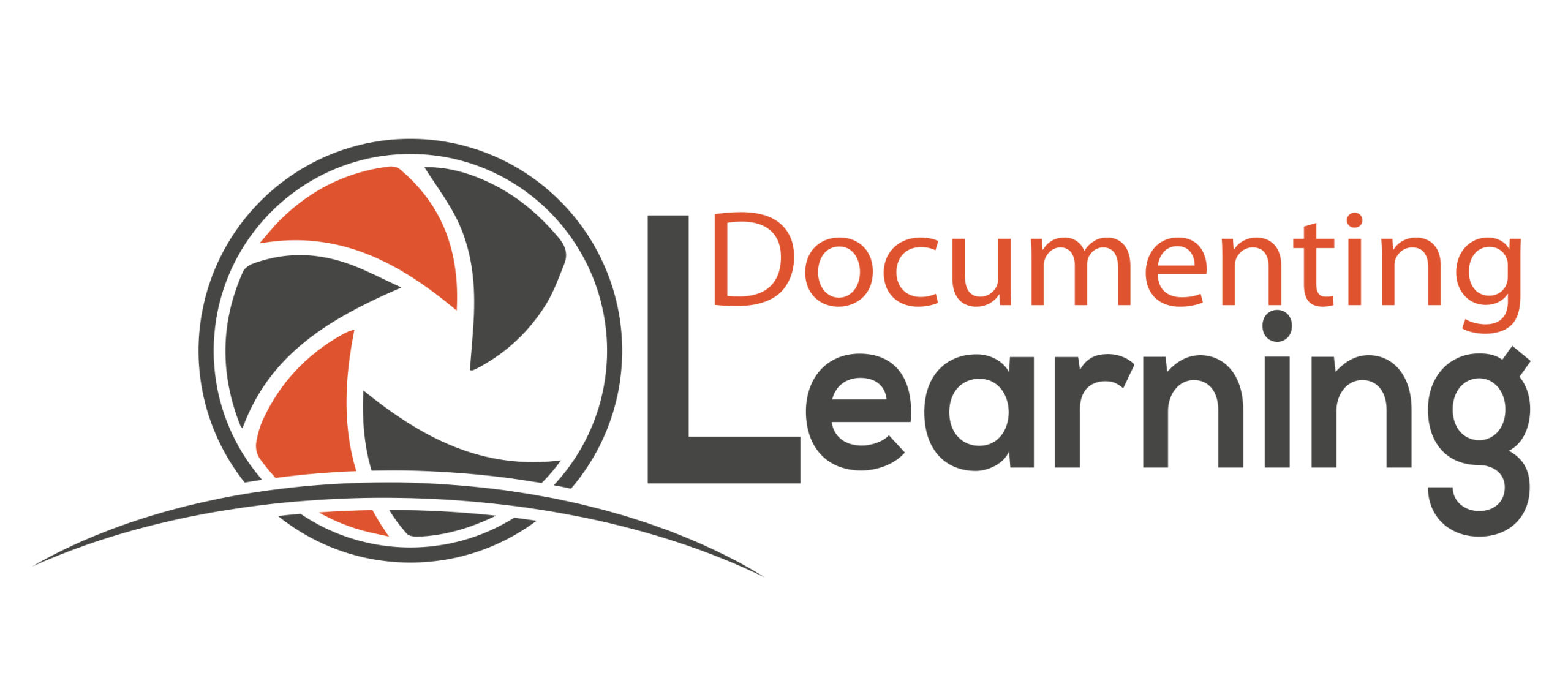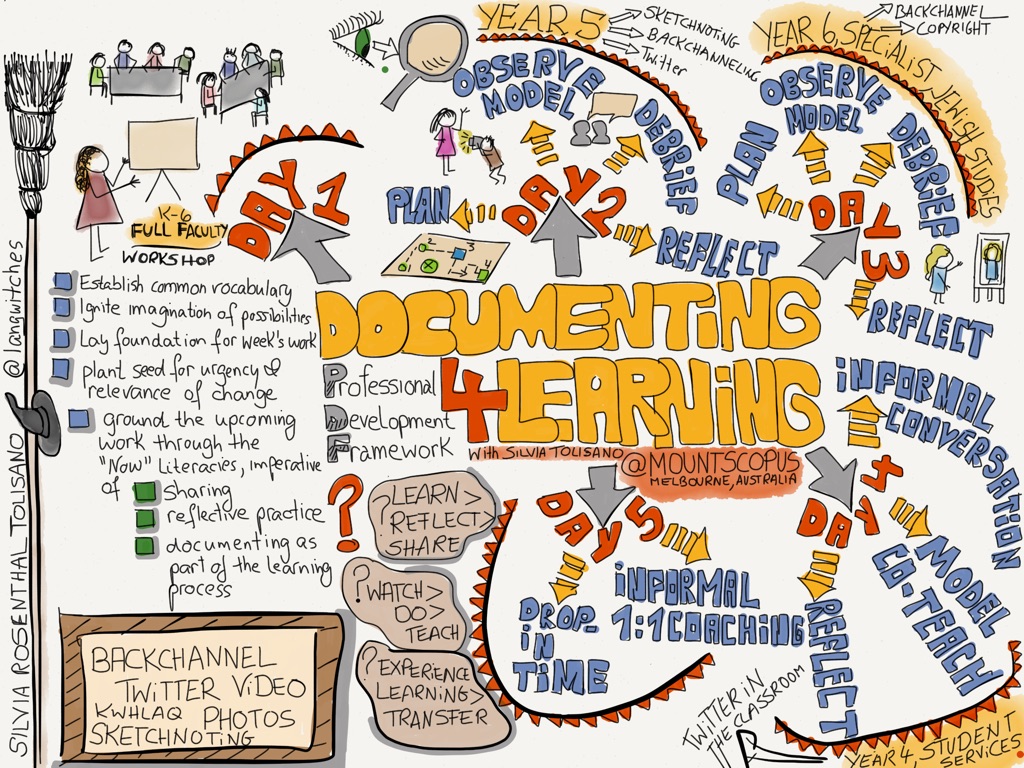 I just returned from a consulting/coaching visit to Mount Scopus Memorial College, a K-12 Jewish Day School, in Melbourne, Australia. It was a one day full faculty (K-6) keynote style workshop to set the tone for a four day intense follow up work with the upper primary school teachers and students. Together with Edna Sackson, the Teaching and Learning Co-ordinator of the school, we planned the overall theme, Documenting FOR Learning, of the intense week to connect with the whole school goal of using data to inform learning.
I just returned from a consulting/coaching visit to Mount Scopus Memorial College, a K-12 Jewish Day School, in Melbourne, Australia. It was a one day full faculty (K-6) keynote style workshop to set the tone for a four day intense follow up work with the upper primary school teachers and students. Together with Edna Sackson, the Teaching and Learning Co-ordinator of the school, we planned the overall theme, Documenting FOR Learning, of the intense week to connect with the whole school goal of using data to inform learning.
I wanted to “document” the Professional Development model of a keynote presentation, coupled with “experiencing” the topic of PD in teachers’ own learning in follow up small group pre-planning, model lessons, observations, debrief sessions, reflective time as well as 1:1 coaching.
Follow along my documentation and judge for yourself, if this type of PD offers a more customized, personalized and a better chance of sustainable growth, connected and collaborative learning in terms of transformative pedagogy in our world of rapid, exponential change.
The week started out with a keynote presentation to set the tone by looking at the “Now” Literacies through the Lens of Sharing.
The NOW Literacies Through the Lens of Sharing from Silvia Rosenthal Tolisano
The keynote was meant:
- to establish a common vocabulary
- ignite imagination of possibilities
- lay the foundation of the upcoming week’s work
- ground the work through the “now” literacies and the imperative of sharing, reflective practice and documentation as part of the learning process
- as a wake up call and to instill a sense of urgency (Are baby steps ok? Is it ok to still ” start to think” of “preparing” students for the 21st century?)
- to make some teachers feel “uncomfortable” in their daily and up-to-now-proven pedagogy
- to shake “the way we have always done things” up
- to make teachers feel overwhelmed and be re-assured that that is the way that ALL OF US FEEL. That it was about knowing how to handle that feeling and how to filter all the information that was constantly being thrown at us.
- to help teachers learn how to use the power of the crowd, a community to collaboratively deal with too much information, too much work and too many new things to adapt and learn at a faster speed
In order to give teachers a taste of what documenting and sharing meant, I asked participants to write down what they were hearing, what they were thinking that was worth sharing. I offered them three different backchannels to be able to experiment if they preferred one over the other for their own learning. Throughout the presentation there were built in Visible Thinking Routines to facilitate the documentation process.
- We created a Google Document with three moderators to summarize and extract resources, links and ideas from the presentation in order to share with all.

- We used Twitter as a backchannel tool with the hashtag #msmcpd for the participants who already had a Twitter account and were willing and comfortable to share with the world.

- We created a chat room on Today’s Meet for anyone to add their voice to the collaborative documentation process

Monday afternoon was spent diving deeper into Documenting FOR Learning. From looking at the What? Why and How? of Documenting4Learning, recognizing that documenting is PART of the learning process to looking at documentation techniques, examples and ways to collaboratively document learning as a classroom community.
After this intense introduction to documenting and sharing for learning, we were ready for the next four days which Edna and I planned to offer her teachers:
- a way to experience the learning, pedagogy and activities they had heard about on Monday
- go through the learning cycle of Watching, Doing and then Teaching
- a dedicated time to learn, reflect and share
We divided the coaching cycle into different sections:
- Planning (as a grade level): What resonated with teachers from Monday’s presentation ? What topic/theme emerged out of Monday’s presentation (“now literacies”, documentation, sharing etc.) that teachers would like to observe me model in one of their classrooms?

- Modeling / Observation: Teachers were charged to document the lesson, student learning and to be prepared to reflect and share as a group in a blog post to the school’s teaching and learning blog. These model sessions in the classroom were not planned, but connected to a lesson, inquiry, big idea or essential questions the class was or have been working on.
The following model lessons emerged (which I will be documenting and sharing in follow up posts). See hyperlinks to already published posts:
- Sketchnoting & Backchanneling with Year 5 & Year 6
- Backchanneling with Silvia Tolisano and Year 5 (by Michelle M)
- Backchanneling in the Jewish Studies Classroom with Year 5 (Guest Post by Edna Sackson)
- Tweeting as a Classroom with Year 4
- KWHLAQ as a way of documenting that turned into Tweeting as a Classroom lesson with Year 5
- Tweeting in order to build a Learning Network and Connect Around the World with Year 5
- Copyright & Backchanneling in the Music Classroom
- Debriefing: A time after the model lesson to debrief as a group, unpack the lesson, the observations, connect to further resources and plan for the reflection session
- Reflection: Dedicated time for the team to reflect on their learning, the model lesson and what does it mean in terms of transfer to the classroom.

Teacher Reflections:

What does “documenting4learning” mean to you?
- Learning with Silvia Tolisano by jbelnick
- Learning with @Langwitches by Edna Sackson
- Curveballs by Year 6 teachers
- Learning with Langwitches by Year 4 teachers
- Capturing the Moment by Claire
- Backchanneling in the Classroom by Edna Sackson
- Finding my Blogging Voice again by Hailey Joubert
Only time will tell if this Professional Development Framework will aid teachers in the transfer from their own learning experience into their classroom and connect to the learning of their students. Good indicators seem to be continued blogging, showcasing, reflecting and sharing student work on the school’s teaching and learning blog and connecting via Twitter ( MSMCYear5 ) as well as enthusiasm by individual teachers to try the modeled lesson (sketchnoting, backchannel and Twitter) observed in another classroom with their own students.
Edna had also scheduled time for me to meet with single subject area teachers, a group of student support services as well as drop-in time to simply chat, imagine possibilities and answer follow up questions from the main keynote or model lessons.
What are your thoughts on this professional development framework? Have you experienced learning this way to improve your teaching practice and repertoire? What have you gained from experiencing the learning before “translating” it into your classroom? What are some other PD framework models that have worked particularly well for you to go beyond the “drive by shooting” types of one hour conference workshops or one day keynote speakers? Please share…















